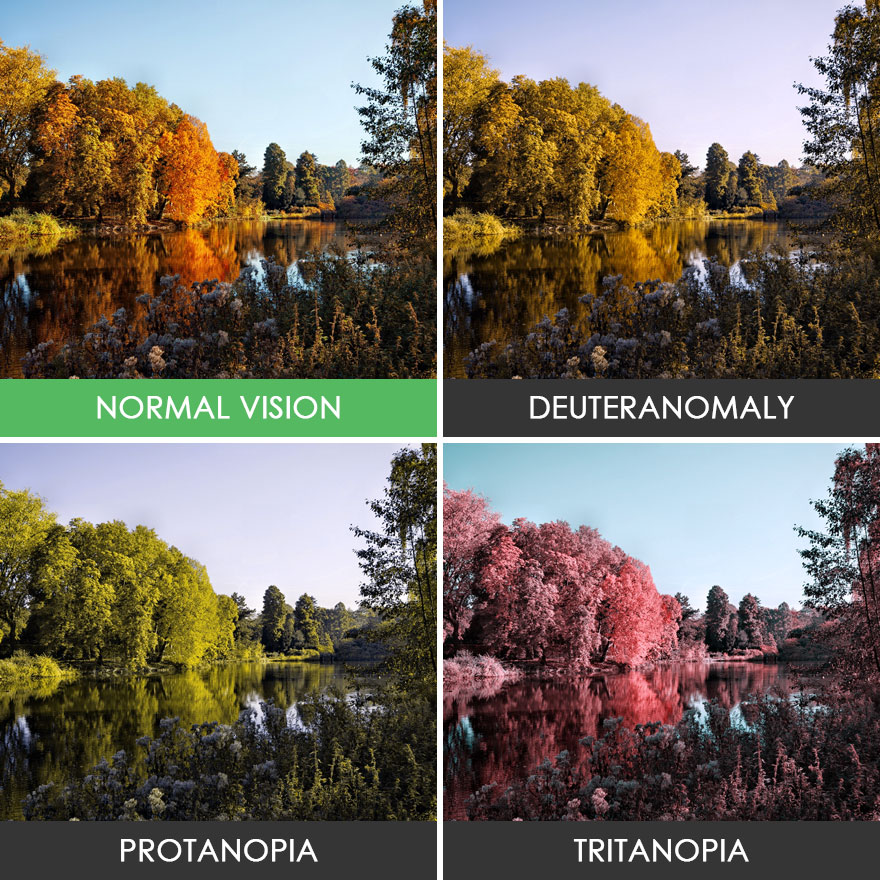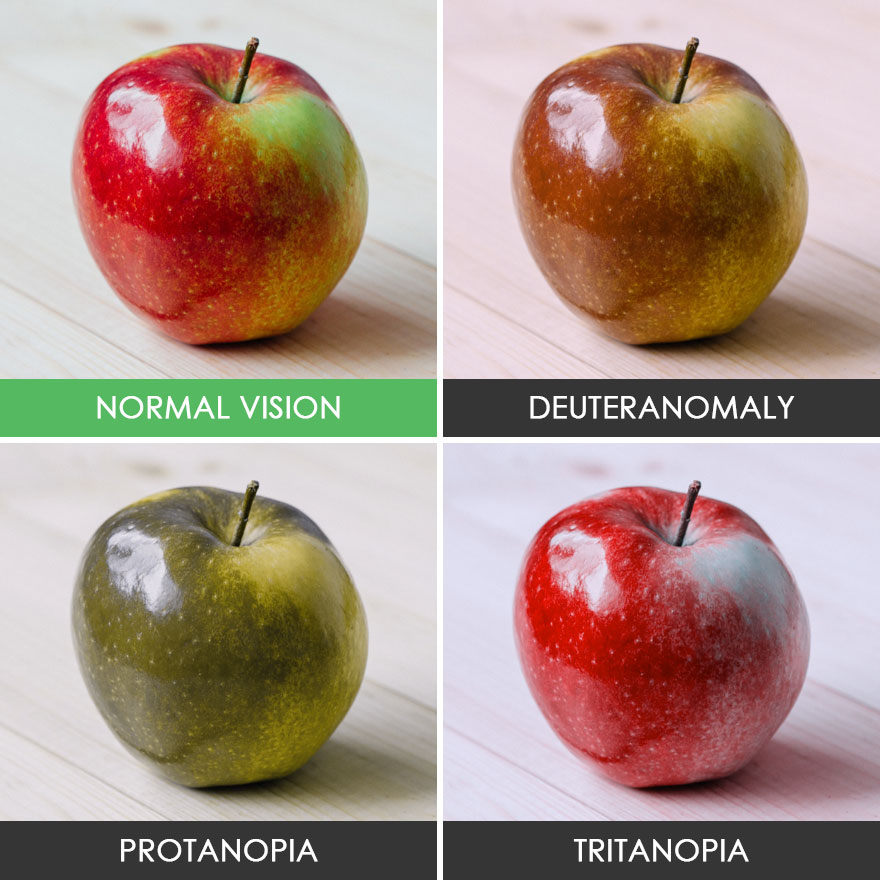Your Results
How Common Is Color Blindness?
What Causes Color Blindess?
Color blindness is caused by defects in the
What Different Types of Color Blindness are There?
Depending on which types of cone cells are deficient, different colors may be more or less difficult to distinguish. The main categories are: Protanopia/ -anomaly is inability or difficulty to see Red; Deuteranopia/ -anomaly is inability or difficulty to see Green; Tritanopia/ -anomaly is inability or difficulty to see blue;Monochromacy is a very rare total lack of color vision affecting fewer than 1 in 30,000 people globally.
Are There Treatments?
Color blindness is not curable-- though it is possible for damage caused by chemical exposures to be recovered from. Specialized lenses that increase color saturation can improve color vision in some people, but early trials suggest that it helps fewer than 50% of those diagnosed as color blind.

